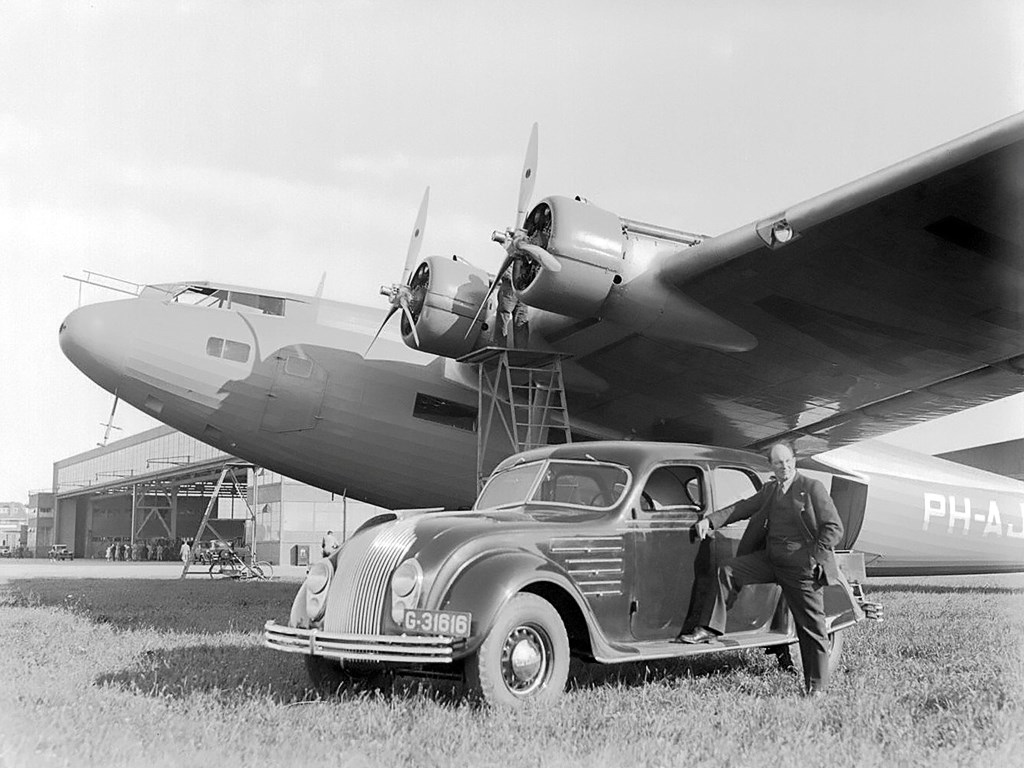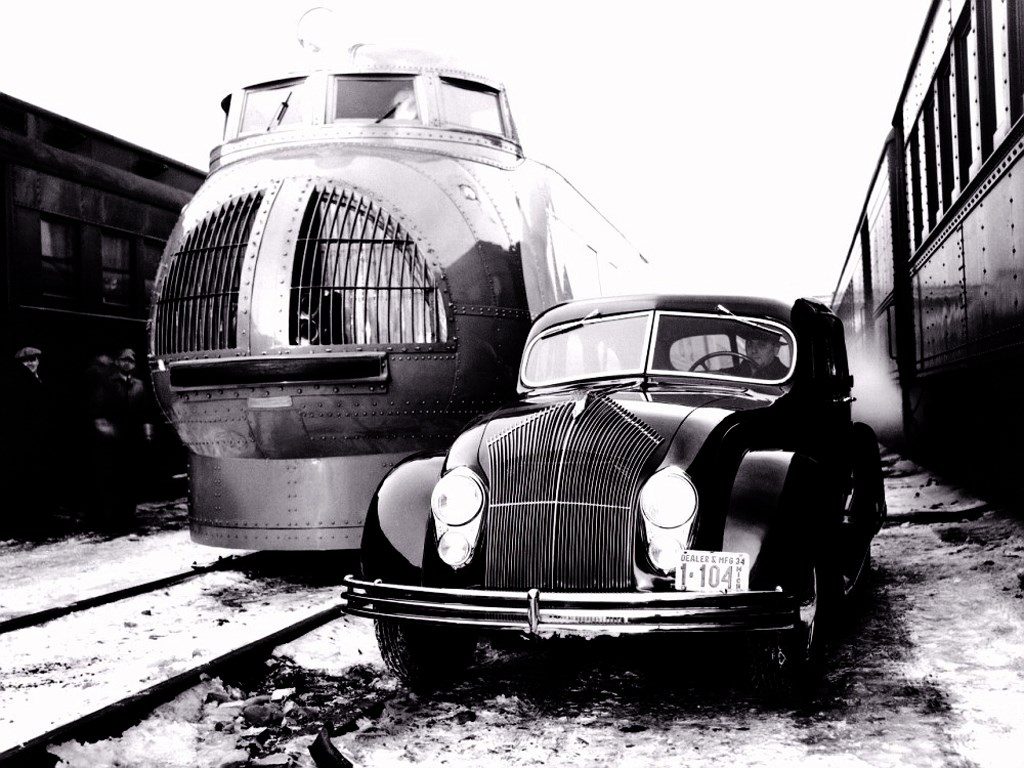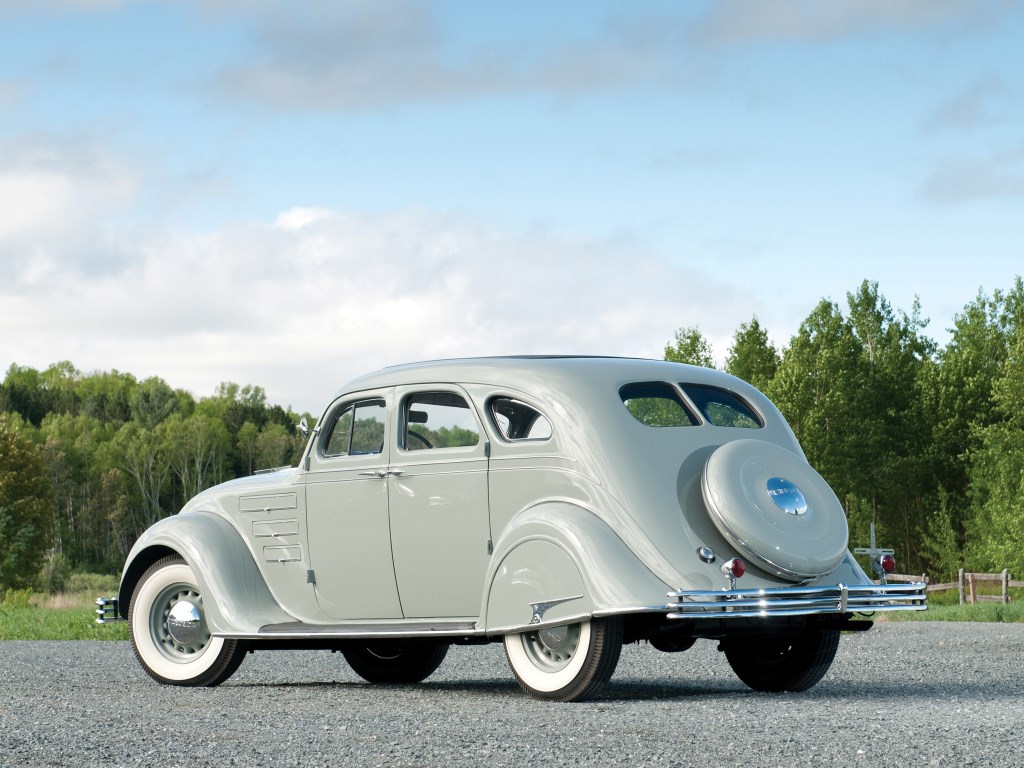
From 1934 to 1937, the Chrysler Airflow was one of the first American production cars to adopt a new style combining curves and fluidity, the result of early research into aerodynamics.
At the end of the 1920s, American cars were hopelessly square and their design was far from inspired. Carl Breer, technical director at Chrysler and an aeronautics enthusiast, and his team studied aircraft fuselages because he wanted to draw inspiration from aircraft techniques to make cars as efficient as possible.
Breer came to the conclusion that a car body had to be studied in a wind tunnel in order to be aerodynamic. To do this, he enlisted the services of engineer William Earnshaw, who was also interested in this new way of designing a car. Earnshaw had little experience of the subject, so he called on the famous aviator Orville Wright to benefit from his experience.

Revolutionary
As wind tunnel research progressed, several models were made and technical choices were made. The car was a steel monocoque, a technique unprecedented in the USA, and its headlights were integrated into the bodywork. The first prototype was built, and Walter Chrysler, the company's CEO, firmly believed in the revolution that this vehicle would bring to an American market that had suffered greatly since the stock market crash of 1929.
For greater stability, the weights of what became the Airflow were redistributed. The engine, on the other hand, was nothing new: it was a 298 ci in-line 8-cylinder from the 1932 Chrysler Eight, placed in front of the front axle. As well as being original, the newcomer is a high performer, and it proved it by driving for 500 miles at an average speed of 95.7 mph.

Mixed reception
The Chrysler Airflow was finally presented at the 1934 New York Motor Show, where it met with some success. It then toured the major American cities, where its distinctive styling did not meet with unanimous approval. Available as a coupé and a saloon, it was offered in 4 different wheelbases to a clientele struggling to find its bearings.
To make matters worse, the first deliveries were delayed by poor organisation in Chrysler's factories, which led to major quality problems. The carmaker lost market share, and the Six, a much more conventional model, won over customers. Also sold under the De Soto brand, the Airflow did no better.

Futile attempts
In 1935, the car was given a facelift to make its radiator grille more pointed. The aim was obviously to boost sales. The Brougham coupé and Town Sedan disappeared from the catalogue. Alongside the Airflow, Chrysler launched the Airstream, a modernised version of the Six, also marketed with the 8-cylinder engine.
The following year, the rear trunk was redesigned to accommodate the spare wheel that had previously been fitted to the rear of the car. In 1937, the range was further simplified, with only a coupé and a four-door saloon remaining. The Airflow received a 5.3-litre engine, but this was not enough to boost sales. From 11,000 units produced in 1934, only 4,603 were built in 1937. The decision was made to stop production, as only 27,878 units were sold in 3 years.
Legend has it that the Airflow was the great disappointment of Walter Chrysler, who never understood the reason for this commercial failure. Too far ahead of its time, this engineering car did not meet the needs of customers at the time. It was little consolation, however, that it inspired many manufacturers around the world, such as Peugeot with its 202, 302 and 402, and Volvo with the PV 36.

























